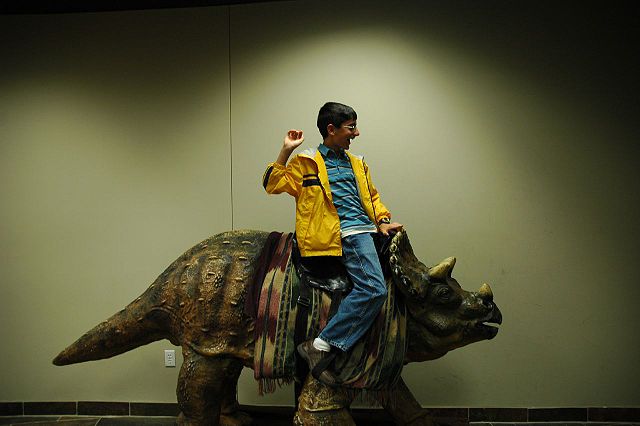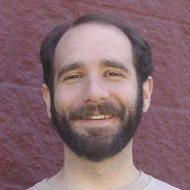In pondering how many people think the earth is less than 10,000 years old, it’s worth remembering a key and often-ignored fact about creationism: Much creationism isn’t “young-earth” creationism.

It’s easy to get hung up on the young-earthers, since they’re so vocal and have such great visuals. Young-earth creationists mount expeditions to find Noah’s Ark. They build “museums” and put saddles on Triceratops. They work out the logistics of how Noah and his kids could run the universe’s biggest floating zoo through a year-long flood, feeding a pair of every animal (seven pairs of the clean animals) and disposing of their excrement.
But young-earth creationism only came to prominence in the 1960s, with the publication of Whitcomb and Morris’s The Genesis Flood. The first generation of creationists in the early 20th century were mostly old-earth creationists of some variety. William Jennings Bryan didn’t adopt the narrow Biblical reading (absurdly called “literal”) that requires a 6,000-year-old earth, and it was his antievolution crusade in the 1920s that shifted creationism from being a theological curiosity into a mass movement. The theological conservatives commissioned to write the essays in The Fundamentals, the books commissioned in 1909 which created the term “fundamentalism,” mostly argued for an old earth, and many didn’t even set themselves against evolution. A handful of young-earth authors in that generation (especially George McCready Price, whose Seventh Day Adventism set him apart from the other creationists of his day) laid a foundation for Henry Morris’s later success, but largely labored in obscurity compared to their colleagues who were debating how to reconcile the age of the earth with the Genesis creation account. The major divisions were, and remain today:
-
Day-age creationists: they hold that the days of Genesis weren’t 24-hour days, but simply long stretches of time during which God did the work described on that day. The animals might have been created in the fifth such period, but that could stretch over the hundreds of millions of years that the fossil record shows animals to have walked and swam and flown and crawled.
-
Gap creationists: they hold that the days of creation described in Genesis each lasted 24 hours, but that those 6 days of creation came after the universe and the earth existed a long time. Genesis 1:1 proclaims “in the beginning, God created the heavens and the earth,” which gap creationists take to be the first creation, followed by lots of time, then a cataclysmic destruction after which (Genesis 1:2) “the earth was without form, and void,” and a new creation began.
-
Progressive creationists: they hold that the creation did not happen in a single bout, but that there were a series of subsequent creations throughout history. The structure of the Genesis days is interpreted fairly loosely, with some days overlapping others (so that, for instance, new plants could be created after the first creation of animals).
This history, and the polls which make it clear that most creationists aren’t committed to a young earth, are especially inconvenient for ID creationists. ID groups like the Discovery Institute try to insist that they couldn’t be creationists, since creationism means belief in a young earth and adherence to strict biblical “literalism.” For instance, a month ago Disco. ‘tute honcho John West (president of their Center for Renewal of Science and Culture) claimed that any such comparison was a form of cheap stereotyping:
Reporters who would never dream of caricaturing a woman or a gay person uncritically repeat as fact the tendentious claim that intelligent design proponents are “creationists.” Reporters usually do this without even defining what creationism is, although the term is presumably meant to conjure up lurid images of (take your pick) Inherit the Wind, Bible-thumpers, witch trials, religious fundamentalism, and humans cavorting with dinosaurs a few thousand years ago. …
Consider the recent New York Times story that repeatedly invoked the terms “creationist” and “creationism” without bothering to define them, even insinuating that a scientist who accepts standard geological dating for the age of the Earth is a “creationist.”
West goes on to cite a Disco. ‘tute FAQ which tries to distinguish ID from creationism by claiming, “Creationism is focused on defending a literal reading of the Genesis account, usually including the creation of the earth by the Biblical God a few thousand years ago.” Indeed, many creationists would not call themselves literalists (various sorts of “inerrantists,” to be sure, but not literalists), and do not object to the standard geological dating of the earth.
Indeed, in the days of William Jennings Bryan, this objection cut the other way. Bryan claimed that the young earth idea was merely an invention of creationism’s opponents, a way to trivialize the real and serious creationism. Ronald Numbers quotes him on page 44 of The Creationists:
“The only persons who talk about a twenty-four-hour day in this connection do so for the purpose of objecting to it,” he wrote in 1923; “they build up a straw man to make the attack easier, as they do when they accuse orthodox Christians of denying the roundness of the earth, and the law of gravitation.”
These days, there is certainly a genuine young-earth creationist movement, which has created its own museums, operates pseudoscholarly journals and conferences, and which markets books and DVDs to enthusiastic audiences. Whitcomb and Morris’s seminal book opened those floodgates in 1961, and the simplicity and certainty of the young-earth creationist scheme clearly appeals to many people searching for some justification for their anxieties about the idea of evolution, and their deep feeling that their God created life and humans in particular.
But today as in the 1920s, people find many other ways to reject evolution in favor of a miraculous supernatural creation, and all of them are creationists, regardless of how old they think the earth might be.
Image credits: Saddled Triceratops at the Creation Museum in Kentucky originally posted to Flickr by John Scalzi and released under a CC-BY-2.0 license. Obtained from WikiCommons.

